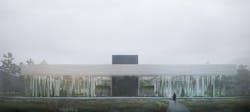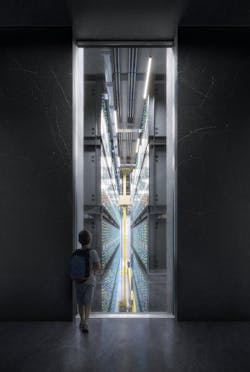Can this new data center concept combat climate change?
By David Malone, Associate Editor
A new prototype model for urban data centers, developed by MIRIS in cooperation with Snøhetta, Skanska, Asplan Viak, and Nokia, hopes to help solve the international climate challenge by allowing excess energy from data centers to power cities with up to 18,000 people.
Many data centers are often built in remote places and all of the excess heat they produce is wasted. Considering data centers account for 2% of the world’s total energy consumption, that wasted excess heat is a substantial amount.
Rendering: Snøhetta/Plompmozes.
The new prototype, named The Spark, takes data centers from their remote locales and moves them to the middle of cities, allowing them to provide nearby buildings with energy. Solar panels on the surrounding houses will provide the data center with energy. The study associated with the new concept shows as many as 18,000 people can be supplied with energy this way and data center power consumption can be reduced by up to 40% compared to traditional centers.
See Also: The world’s largest data center is being built 140 miles north of the Arctic Circle
Buildings that require a lot of energy, such as schools and hospitals, will be placed in the city center near the data center while commercial real-estate and homes will be located farther away. A cyclical energy concept where the heat generated from the data center is looped through the city before it is brought back to the center will be used. This allows buildings to be heated in the city and for the data center to be cooled near the end of the cycle.
Rendering: Snøhetta/Plompmozes.
Lyseparken outside of Os municipality in Norway is being considered as a possible test site for The Spark. If the pilot is launched in this location, Lyseparken will become the first energy positive city in the world, according to MIRIS.
The Spark concept is a natural continuation of the Powerhouse collaboration’s “plus house” concept. A plus house building is an energy producing building that, over a 60-year period, will generate more renewable energy that the total amount of energy that would be required to sustain daily operations and to build, produce materials, and demolish the building. The Spark hopes to be a catalyst to expand the Powerhouse plus house definition to cities as a whole.



